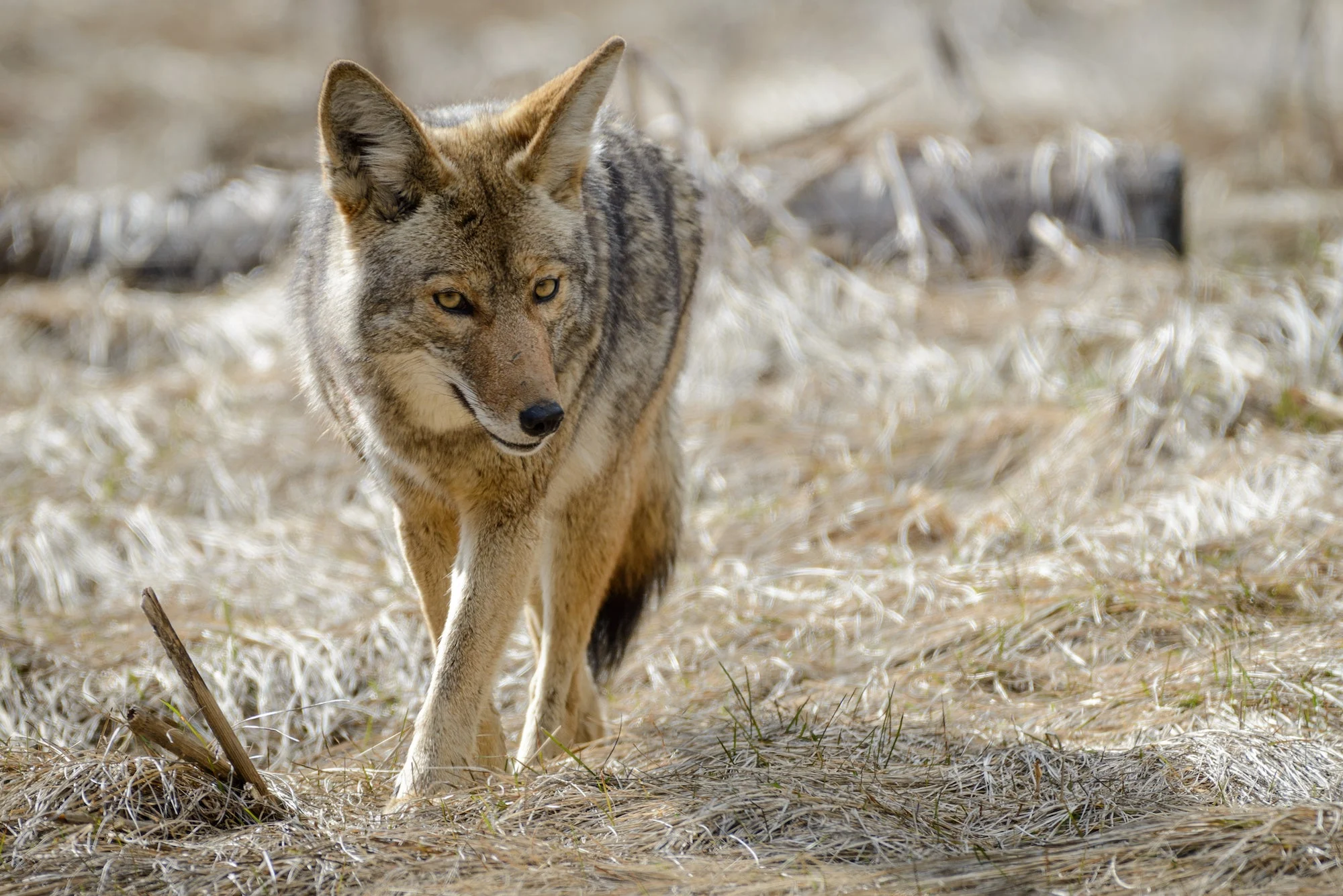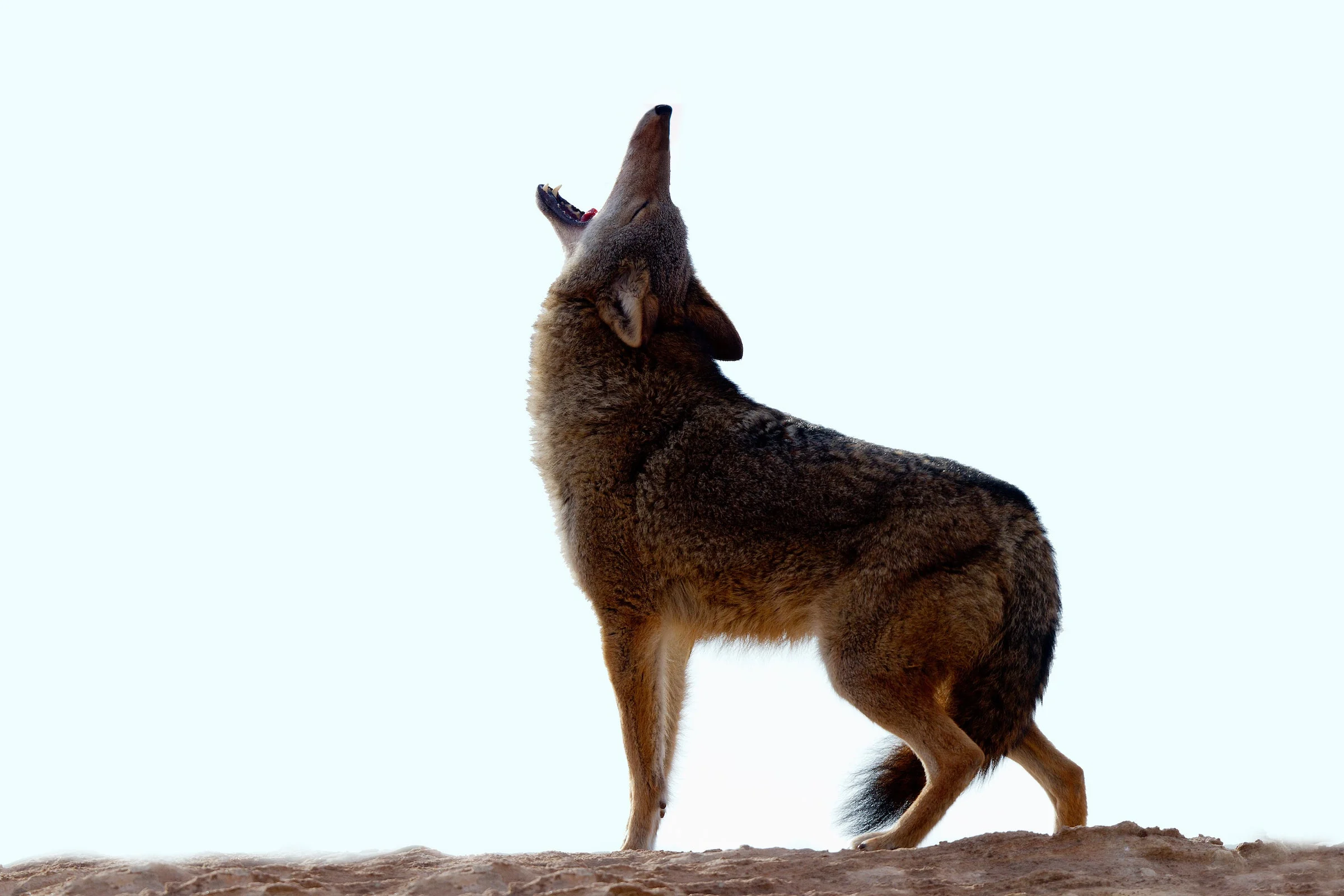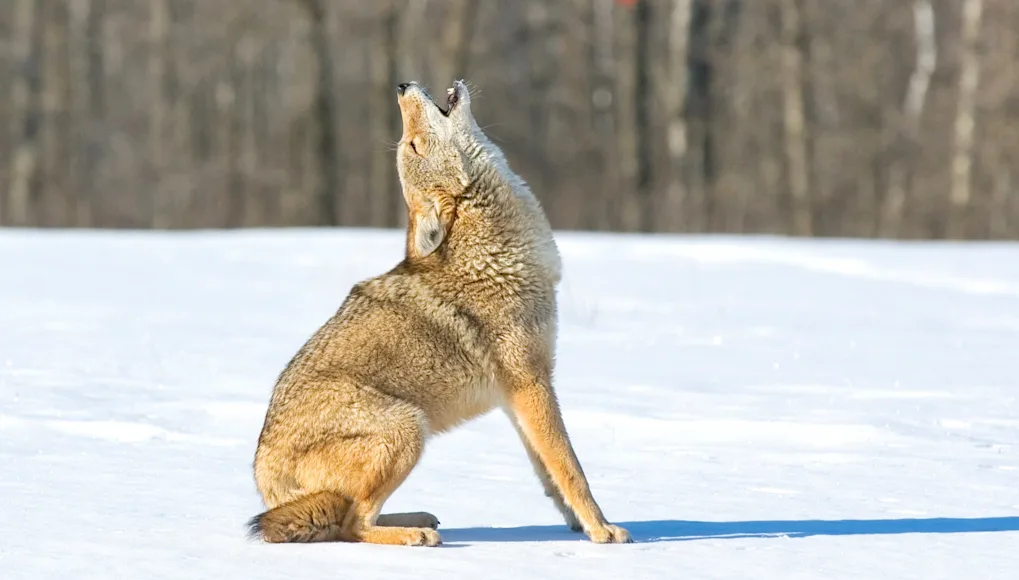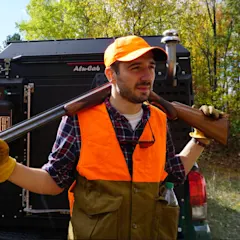What does a coyote sound like? This a tough question because coyote vocalizations can be so diverse. According to researchers, Coyotes can make 11 different sounds including everything from yelping and huffing to barking and howling. In short, coyotes make sounds to communicate with other coyotes. But what’s more impressive is that researchers believe amongst coyotes, vocalizations are more nuanced and can convey things like identity, age, sex, and even emotional state. Here’s a bit more on what coyotes sound like and some video clips to help give you an idea of what to listen for in the wild. Plus, we’ll break down what the best coyote calls
are to use while hunting.
What do Coyotes Sound Like: Table of Contents
Resources to Hear What Coyotes Sound Like
The Top Coyote Vocalizations for Hunting
More on the Coyote Howl and How to Use it for Hunting
Coyotes Can Sound Different Depending on the Region and Time of Year
Hunt the Right Spot at the Right Time
What do Coyotes Sound Like: Frequently Asked Questions
Resources to Hear What Coyotes Sound Like
The Top Coyote Vocalizations for Hunting
Howls
Howling is a great way to locate a coyote. After all, a group of coyotes will howl to assemble, especially after hunting. Family groups will also howl to advertise their presence in an area to other coyotes. They’re basically saying, we live here and don’t mess with us. To call a coyote in with a howl, you’ll want to locate them first with a group yip howl, then switch to a lone howl to bring them closer. (More on that below.)
Whines, Yelps, and Pups in Distress
Coyotes make yelps and whines when being submissive or in distress. Pups especially will yelp when they’re in trouble. Whines can mean other things too, like hunger or pain. Using a pup-in-distress call for coyote hunting
plays on a coyote’s territorial and parental instincts and works well in the spring when coyotes are denning. Some coyotes will come to a pup-in-distress call any time of the year out of curiosity.
Challenge Howl
.embed-container { position: relative; padding-bottom: 56.25%; height: 0; overflow: hidden; max-width: 100%; } .embed-container iframe, .embed-container object, .embed-container embed { position: absolute; top: 0; left: 0; width: 100%; height: 100%; }
A challenge howl is more low-pitched than other howls. It’s also more aggressive. Alpha males use this to either push juvenile or submissive dogs from their territory. Dominant coyotes looking for a fight (and a place to call home) will also use this call to challenge other dogs already living in a territory. It’s a risky call to use while hunting because you might scare submissive and juvenile dogs away. But you could also piss off an alpha dog enough to come looking for a fight.
Bark
A bark is just that. You’ve probably heard something similar from domestic dogs. You can make this noise with your mouth or a call. Hunters usually use it to stop a coyote before taking a shot.
More on the Coyote Howl and How to Use it for Hunting
Randy Anderson designs coyote calls for Primos Game Calls, hosts the Primos predator hunting videos and TV shows, and puts on predator seminars. He often uses howls to call in a coyote. “A lot of guys use howls to locate coyotes, then move in, set up, and do some kind of distress sound,” he says. “I’ll also do that, but I like to stick with howls. They work especially well on coyotes that have been educated by other callers using traditional distress sounds.”
.embed-container { position: relative; padding-bottom: 56.25%; height: 0; overflow: hidden; max-width: 100%; } .embed-container iframe, .embed-container object, .embed-container embed { position: absolute; top: 0; left: 0; width: 100%; height: 100%; }
One of Anderson’s favorites is the interrogation howl. “It’s a long, lonesome howl—ooooOOOowwwwooo—that says, Hey, I’m just an ol’ lonely coyote out here. Anybody else out there? I do two or three of them, 30 seconds apart, with each lasting six to eight seconds. If nothing answers back, I may work on them with other calls. Don’t be surprised if coyotes show up without howling back.”
In an area where he knows coyotes are within earshot, having seen them or had them answer his calls previously, he’ll also try the challenge howl. This coyote sound is a short howl, three seconds, followed by a quick, attitude-filled woof, woof! “If you’re in their territory, they’ll want to know who you are and may give it right back to you,” Anderson says. “When they respond, all you’ve got to do is really howl back at them, maybe throw in a rabbit or pup distress call—kiyi, kiyi! like you slammed your car door on his tail—and they’re coming in.”
.embed-container { position: relative; padding-bottom: 56.25%; height: 0; overflow: hidden; max-width: 100%; } .embed-container iframe, .embed-container object, .embed-container embed { position: absolute; top: 0; left: 0; width: 100%; height: 100%; }
His third go-to call is the female invitation. It’s like an interrogation howl, only shorter and softer, and not so threatening. “It’s kind of a soft awoooo, ruu, woooo, ruuu,” Anderson says. “Do this over and over, nonstop. The female uses this call when she’s trying to let males know that she’s almost ready to be bred.” At the height of breeding season, in late January and February, this call can be the most effective of all.
Coyotes Can Sound Different Depending on the Region and Time of Year
Al Morris, one of only two men to win the World Calling Championship three times, alters his calling tactics according to the season. In fall, he mostly sticks to prey distress sounds, such as rabbits, and he doesn’t howl much. One reason for this is that pups are out at that time, and if they hear a dominant howl, they’ll shy away. But winter is prime time to use coyote calls. “From late December through the middle of March, I use more coyote vocalizations,” he says. “My No. 1 cold-weather tactic is to fire on as many cylinders as I can. It’s cold, and coyotes need calories, so I’ll still fire to their stomachs with rabbit distress calls. But I’ll also fire on their territorial nature with pup calls or howls, and [like Anderson] I’ll play on their breeding instincts.”
There are differences between calling western and eastern coyotes. “When eastern coyotes howl, they sound like wolves: baaaaaaaaa. They’ve got deeper voices. They’re louder and more aggressive, probably because their territories are more defined. In the East, I’ll use not only female invitation howls or lone howls but also coyotes in distress. You have to be more dramatic.”

Coyotes use sound to communicate with other coyotes. Elliot via Adobe Stock
Hunt the Right Spot at the Right Time
No matter what calls you use, a good setup is a must. It seems obvious, but you’ve got to set up in areas that hold coyotes. That means finding spots near dens (thick brush near water, ledges with views of approaching trails) and feeding areas. Feeding areas could include edge cover, spots near deer bedding areas, or, closer to civilization, farms and other spots that hold potential prey.
When you set up, wear camouflage and break up your outline. Coyotes have keen eyesight, and anything that looks out of place will tip them off. Make sure you have a view of approach trails, particularly those downwind of your position (coyotes try to come in from downwind).
Timing, says Bob Severe of Knight & Hale Game Calls
, is critical. “When it’s way below zero at daylight, I wait until the warm part of the day to call. The coyotes are cold and will usually wait until it warms up before they get out and start moving around.

Coyotes have many different kinds of howls to convey different things. PIXATERRA via Adobe Stock
“They’re always hungry in winter, so I’ll start out with distress sounds,” he says. But if those don’t work, Severe may switch to either the female invitational call, since they’re mating now; or a more aggressive howl that starts fast and ends abruptly, playing on the coyote’s territoriality. If nothing is going on after half an hour, Severe will usually try another location.
**Read Next: How to Hunt Coyotes: a Beginner’s Guide
**
“Magpies will let you know when coyotes are coming in,” he says. “When I’m calling and hear magpies, I’ll look for the birds and start glassing below them for coyotes.
“You have to understand what coyotes are saying so you know what to do. That’s only going to happen by getting out and working with real coyotes in different situations.”
What do Coyotes Sound Like: Frequently Asked Questions
What sound does a coyote make when scared?
Coyotes will make a bark-howl sound when they’re threatened or are trying to alert other coyotes to a threat.
Why do coyotes scream at night?
Coyotes howl at night to protect its family group’s area against coyotes from outside of their group. They’ll also call to assemble a family group that’s been split apart during a hunt or other activity.
Will a coyote growl at you?
Coyotes will growl if they perceive you as a threat. This can sometimes happen in suburban areas where coyotes and humans coexist, especially if the person has a dog with them.


